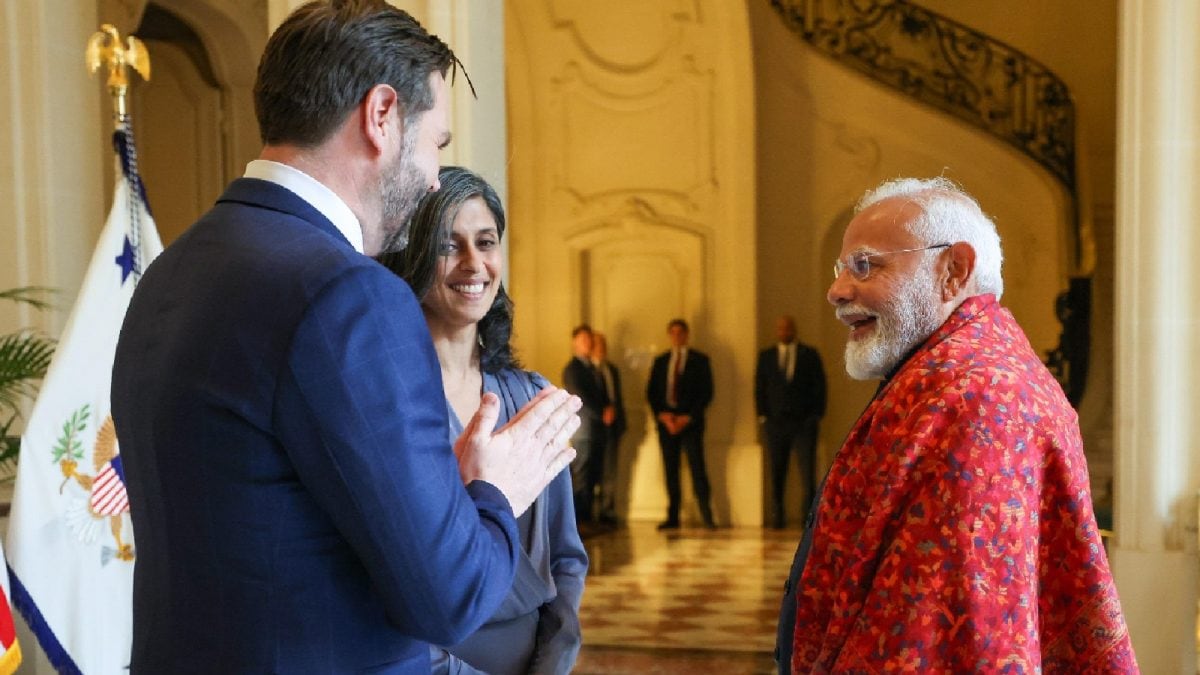US Vice President JD Vance’s four-day visit to India marks a pivotal moment in the deepening of strategic and economic ties between the world’s two largest democracies. In an era marked by shifting global power equations and an intensifying US-China rivalry, Vance’s visit underscores Washington’s renewed focus on strengthening its alliance with New Delhi.
On Monday, Vice President Vance met with Prime Minister Narendra Modi in New Delhi for comprehensive discussions on a broad spectrum of bilateral, regional, and global issues. According to official sources, both leaders took stock of the progress in ongoing collaborations and reaffirmed their commitment to shaping a future-focused partnership built on shared democratic values, economic aspirations, and regional stability.
In a gesture of camaraderie and continuity, Prime Minister Modi fondly recalled his previous visit to Washington, D.C., and the warm reception he received from President Donald Trump. The leaders emphasized how the twin visions of “Make America Great Again” and “Viksit Bharat 2047” provide a complementary framework for collaboration — a convergence of national development goals that promises mutual benefit.
A key outcome of the meeting was the reaffirmation of intent to fast-track the India-US Bilateral Trade Agreement (BTA), a long-anticipated pact that could usher in a new era of economic cooperation. On April 15, both countries signed the terms of reference for the initial phase of the BTA. Virtual negotiations are set to begin this month, with the next round of in-person discussions scheduled for mid-May.
Both sides welcomed the positive momentum on the trade front, signalling that the agreement could serve as a cornerstone for a broader strategic alliance. From technology transfer to market access, the proposed BTA is expected to generate tangible benefits for both economies, from job creation to innovation and investment.

Beyond trade, Modi and Vance reviewed progress in other critical areas, including energy cooperation, defence modernization, and cutting-edge strategic technologies such as semiconductors, AI, and cybersecurity. Both leaders stressed the importance of creating secure and resilient supply chains, a key priority for both nations amid ongoing global disruptions and China’s growing assertiveness.
The two also exchanged views on regional and international developments, reiterating their commitment to peace, dialogue, and diplomacy as the preferred path forward. From the Indo-Pacific to West Asia, the India-US partnership is seen as a stabilizing force in an increasingly uncertain world.
Vice President Vance, accompanied by his wife and children, landed at Delhi’s Palam Airport on Monday morning. He was warmly received by Union Minister for Railways and Information & Broadcasting Ashwini Vaishnaw and accorded a ceremonial Guard of Honour — a gesture reflecting India’s high regard for the visit.
Prime Minister Modi extended his best wishes to the Vice President, the Second Lady, and their family for a pleasant and productive stay in India. He also conveyed his greetings to President Trump and expressed his anticipation for Trump’s visit to India later this year.
After concluding his meetings in Delhi, Vice President Vance visited Jaipur and Agra before wrapping up his four-day visit. His itinerary combines diplomacy with cultural outreach, symbolizing not just statecraft, but people-to-people engagement.
At a time when the United States is recalibrating its global alliances, JD Vance’s India visit stands out as a deliberate and timely diplomatic overture. It sends a clear message — that Washington views India not just as a partner of convenience, but as a long-term strategic ally in shaping the future of the global order.
As both nations gear up for closer cooperation in the years ahead, this visit may well be remembered as a milestone moment in the India-US relationship — pragmatic, purposeful, and full of promise.





